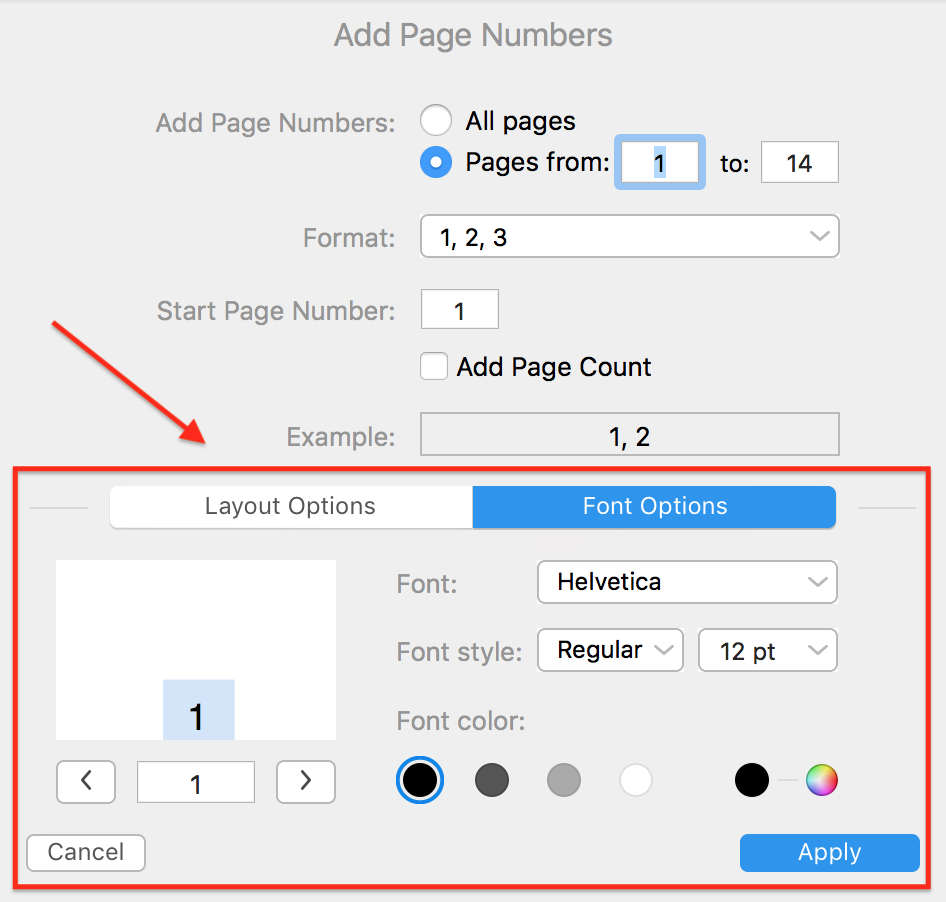
The key advances in Pages are summarised below:įirst version - basic features - tables, columns, headers & footers, and some formatting.

The most recent major version is 5.5 released in November 2014, which was part of Apple's iWork '14 release. The version 4.2 release of Pages (in July 2012), added support for the auto-syncing of documents through iCloud, whilst the version 5.0 release (in October 2013) added online collaboration across Macs and iOS devices.
#How to add page numbers in pdf free update
pages documents so that they update when that data is changed. Pages integrates well with other Apple applications - Since iWork '08 a media browser has been incorporated which allows users to drag and drop photos, movies and music from iTunes, iPhoto, Aperture and iMovie, and it is possible to link charts produced in Numbers to. Pages provides tools for collaboration through change-tracking and advanced commenting and feedback features.

Pages also comes with the standard spelling and grammar checkers. It incoporates most of the key features found in modern word processors, including the selection of fonts based on WYSIWYG ("what you see is what you get"), the use of headers, footers, page-breaks, footnotes, bulleted lists and support for automatically generating a table of contents. Pages can used to create custom documents which include charts, tables, images, text boxes, shapes, equations and graphs. Pages includes over 140 Apple-supplied templates to allow users to create common documents such as posters, newsletters, certificates, reports, brochures and formal letters - iWork '09 added support for a further 40 new templates. A direct competitor to Microsoft Word (part of Microsoft's "Office" suite) it originally aimed to take a more simplistic approach to document creation and editing than Word, stripping out many of Word's more complex features. Pages is a hybrid application, first released by Apple in February 2005, that allows users to perform both word processing and page layout tasks. pages file extension are word processing documents created by Apple's "Pages" application which forms part of Apple's iWork office suite, a set of applications which run on the Max OS X and iOS operating systems, and also includes Numbers (for spreadsheets) and Keynote (for presentations). Close the Page Assembly window when you are finished.Files with a. Repeat selecting and dragging pages from the Page Assembly window to different locations in your PDF as needed. A red bar will appear to indicate the final location of the inserted pages.Ĩ. Starting with your mouse over one of the highlighted pages, click and drag from the Page Assembly window and into the location in Document Assembly window where you would like the pages to be inserted. Highlight the page you want to insert by clicking on it. You can highlight multiple pages by holding Ctrl on your keyboard while clicking.ħ. The file will open in the Page Assembly window.Ħ. Power PDF will temporarily convert any file type to a PDF before opening it.)ĥ.

Find the file and click Open. (Note: The file you select does not need to be a PDF. A window will open where you can select a file to insert pages from. While the Document Assembly tool is open, select the Page Assembly tool, also located in the Pages section of the top ribbon.Ĥ. Your PDF will be displayed in Document Assembly view, with each page displayed as a thumbnail.ģ. Select the Document Assembly tool, located in the Pages section.


 0 kommentar(er)
0 kommentar(er)
